
Sir Leslie Stephen was an English author, critic, historian, biographer, mountaineer, and an Ethical movement activist. He was also the father of Virginia Woolf and Vanessa Bell.
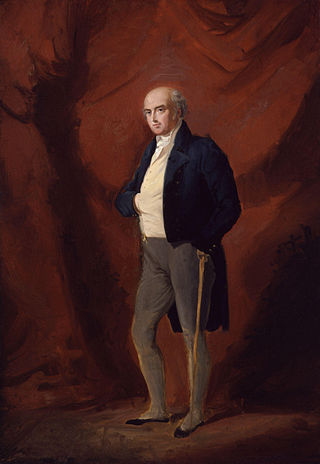
Henry Richard Vassall-Fox, 3rd Baron Holland of Holland, and 3rd Baron Holland of Foxley PC, was an English politician and a major figure in Whig politics in the early 19th century. A grandson of Henry Fox, 1st Baron Holland, and nephew of Charles James Fox, he served as Lord Privy Seal between 1806 and 1807 in the Ministry of All the Talents headed by Lord Grenville and as Chancellor of the Duchy of Lancaster between 1830 and 1834 and again between 1835 and his death in 1840 in the Whig administrations of Lord Grey and Lord Melbourne.

Baron Holland, of Holland in the County of Lincoln, and Baron Holland of Foxley, of Foxley in the County of Wiltshire, were two titles in the Peerage of Great Britain. The first barony was created on 7 March 1762 for Lady Caroline Fox, the daughter of Charles Lennox, 2nd Duke of Richmond and the eldest of the famous Lennox sisters. The second barony was created on 17 April 1763 for her husband, the prominent Whig politician Henry Fox. Lord and Lady Holland were both succeeded by their eldest son, the second Baron. He had previously represented Salisbury in Parliament. On his early death in 1774 the titles passed to his only son, the third Baron. He was also an influential Whig politician and notably served as Lord Privy Seal from 1806 to 1807 in the Ministry of All the Talents. He was succeeded by his eldest legitimate son, the fourth Baron. He sat as Member of Parliament for Horsham. He had four daughters but no sons and on his death in 1859 the titles became extinct.

Valentine Cameron Prinsep was a British painter of the Pre-Raphaelite school.

Prinsep may mean any of several notable members of the British Prinsep family.
Fox Primary School is a primary school in London for children between the ages of 4 and 11, in the Royal Borough of Kensington and Chelsea. It is located on Kensington Place, between Kensington Church Street and Notting Hill Gate.

Henry Edward Fox, 4th Baron Holland of Holland, 4th Baron Holland of Foxley was briefly a British Whig politician and later an ambassador.

Stephen Fox, 2nd Baron Holland of Holland and 2nd Baron Holland of Foxley of Holland House in Kensington, Middlesex, was a British peer.

John Allen was an eighteenth and nineteenth century political and historical writer, and Master of the College of God's Gift in Dulwich. More than one street in Kensington, London, is named after him.
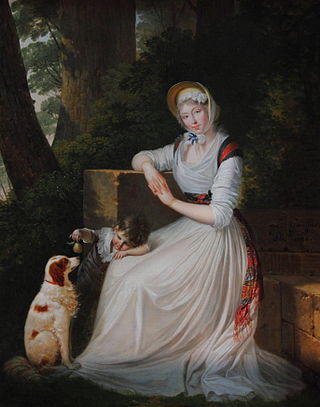
Elizabeth Vassall Fox, Baroness Holland was an English political hostess and the wife of Whig politician Henry Vassall-Fox, 3rd Baron Holland. With her husband, and after his death, she hosted political and literary gatherings at their home, Holland House.
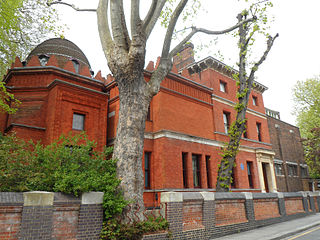
The Holland Park Circle was an informal group of 19th-century artists based in the Holland Park district of West London, England, especially in Melbury Road and Holland Park Road. George Frederic Watts, Frederic Leighton, Valentine Prinsep, Luke Fildes, Hamo Thornycroft and William Burges are considered key members of the group.
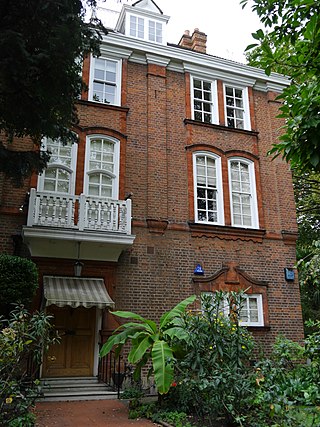
Woodland House is a large detached house at 31 Melbury Road in the Holland Park district of Kensington and Chelsea, West London, England. Built from 1875 to 1877 in the Queen Anne style by the architect Richard Norman Shaw, it is a Grade II* listed building. Commissioned by the painter Luke Fildes, Woodland House is next to William Burges's Grade I listed Tower House.

8 Melbury Road is a large detached house at the Holland Park district of Kensington and Chelsea, W14 in England. Built in the Queen Anne style by the architect Richard Norman Shaw, it is a Grade II* listed building.

Henry Thoby Prinsep was an English official of the Indian Civil Service, and historian of India. In later life he entered politics, and was a significant figure of the cultural circles of London.

Princess Marie of Liechtenstein was a French-born English writer. A foundling of unknown paternity, she was adopted by the childless English nobleman Henry Fox, 4th Baron Holland (1802–1859) and his wife, and eventually married into the Princely House of Liechtenstein.

Holland House, originally known as Cope Castle, was an early Jacobean country house in Kensington, London, situated in a country estate that is now Holland Park. It was built in 1605 by the diplomat Sir Walter Cope. The building later passed by marriage to Henry Rich, 1st Baron Kensington, 1st Earl of Holland, and by descent through the Rich family, then became the property of the Fox family, during which time it became a noted gathering-place for Whigs in the 19th century. The house was largely destroyed by German firebombing during the Blitz in 1940 and today only the east wing and some ruins of the ground floor and south facade remain, along with various outbuildings and formal gardens. In 1949 the ruin was designated a grade I listed building and it is now owned by the Royal Borough of Kensington and Chelsea.
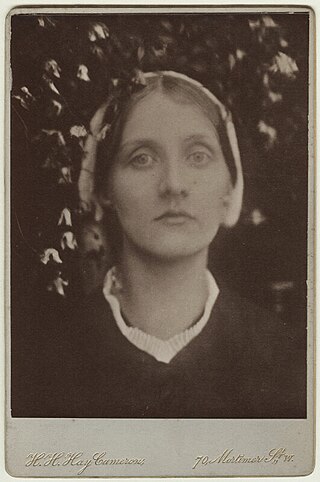
Julia Prinsep Stephen was an English Pre-Raphaelite model and philanthropist. She was the wife of the biographer Leslie Stephen and mother of Virginia Woolf and Vanessa Bell, members of the Bloomsbury Group.

Melbury Road is a residential road in the Holland Park area of the Royal Borough of Kensington and Chelsea, London, England. It is known for houses owned by the Victorian Holland Park Circle, an informal group of 19th-century artists, including William Burges, Luke Fildes, Frederic Leighton, Valentine Prinsep, Hamo Thornycroft, and George Frederick Watts.

Holland Park Road is a residential road in the Holland Park district of the Royal Borough of Kensington and Chelsea, London, England. It is especially known for Leighton House, owned by the artist Lord Frederic Leighton, President of the Royal Academy and leading light of the Victorian Holland Park Circle, an informal group of 19th-century artists, including William Burges, Luke Fildes, Frederic Leighton, Valentine Prinsep, Hamo Thornycroft, and George Frederick Watts, who lived in the area.

Sara Monckton Prinsep born Sara Monckton Pattle was the leader of the Little Holland House salon in Kensington. She was a patron of George Frederick Watts.





















